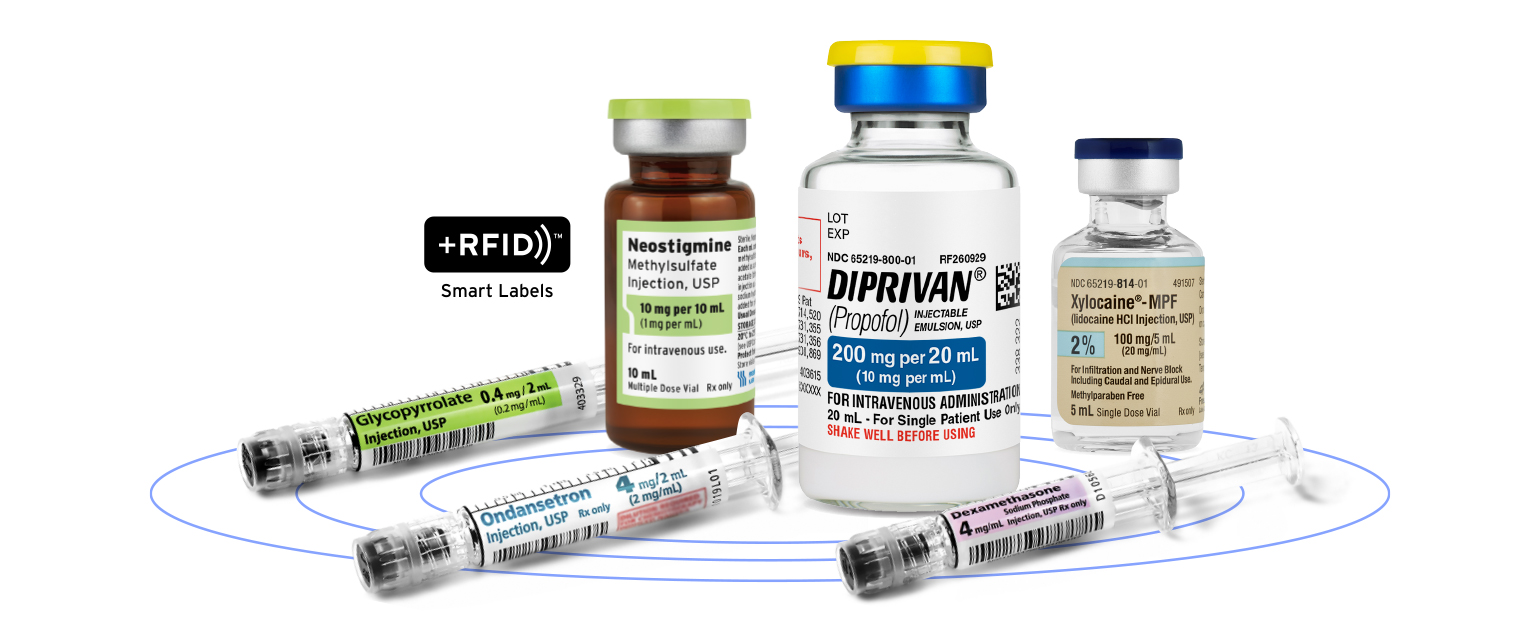RFID Anesthetic Dosages
- Home
- Pages

History Of Anesthetic Dosages :
In medical operation theatres across the world, anesthetic dosages have always been a very critical part of the surgery, almost as important as the surgery itself.
This is because the right dosage of the anesthetic is critical. A very low dosage will result in:
- The patient either feels the pain.
- The patient does not remain immobile (can move about) resulting in a botched surgery.
A too-high dosage will however prevent him from moving forever (in other words he may get killed).Now to reach this virtuous mean is real a challenge and a test of skill for all surgeons and anesthetists.Many times, anesthetics have been administered to the patient by making him breathe in some form of a volatile vapor or gas before surgery.This really cannot be controlled precisely, again leading to overdosage or underdosage.
Present Situation Of Anesthetic Dosages
Only one company has so far introduced this system and patented it too.About 4.5 million syringes are already being manufactured for this application in one year.

Problems With The Present Situation:
The present system of administration is imprecise.Also, the volatile anesthetics that are breathed in by the patient leads to many unpleasant side effects like a groggy feeling in the head, as the patient recovers (similar to a very bad hangover), nausea and vomiting.This in turn makes recovery slow and painful.
To have a better system, a leading pharma company came out with an injectable anesthetic that could directly be administered intravenously. The anesthetic is metabolized (broken down naturally) by the body over a period of time and the patient recovers fast without the typical groggy-headed feeling of a large hangover. However, there is a catch. To ensure that the anesthetic works well, the doctor has to be able to maintain the blood concentration at an optimum level. This means that the infusion has to be continuous at a rate higher than the rate at which it gets broken down. This rate is different for different patients depending on their age, body type, and state of health. Thus! there are different vials for different types of patients and the duration of the surgery. The infusion of this anesthetic is done with a vial and the vial has to be infused in a syringe which is then fitted into the infusion pump. The anesthetist has to be absolutely sure of which vial is being loaded into the syringe.
RFID Solution Of Anesthetic Dosages:
For the dosages, the company eliminated the vials and came out with single use syringes preloaded with different dosages. Depending on the patient, the anesthetist had to choose which dosage would be most suitable and select the correct syringe accordingly.
To make the system fool proof, RFID technology was used.The RFID solution was to implant a multi-frequency magnetic resonance tag in the syringe itself, the infusion machine has a pump which is equipped with a device that calculates the amount of anaesthetic to be administered and also has an inbuilt RFID reader.Once the anesthetist fills in the patient information, the system calculates which dosage would be right.The anesthetist then has to select the syringe with the correct amount of dosage in it. The reader accurately identifies the syringe and displays it, in case the wrong syringe is loaded, the pump will not start and give Out a warning.Thus automatic identification of the drug ensures patient safety
Future Trends:
If this product continues to show success then there is no question that other similar products with different applications will be introduced by other medical device companies.
- RFID Fixed Asset Management
- RFID Anti-Theft Systems
- RFID Jewellery Tracking System
- RFID Untouched Attendance
- RFID Warehouse Management
- RFID Animal Identification
- RFID Vehicle Identification
- RFID ETC(Electronic Toll Collection) Solution
- RFID Laundry Management
- RFID Student/Parent Auto Voice Calling at School
- RFID Royalty Customers Deals at Shopping Malls
- RFID Document Management
- RFID Anesthetic Dosages
- RFID Baggage Handling
- RFID People & Personnel Tracking
- RFID Blood Banks
- RFID Car manufacturing
- RFID Drug Pedigree
- RFID Event Management
- RFID Race Solution Sports Events
- RFID Food Safety
- RFID National Identification
- RFID Gasoline Dispensing
- RFID Hotels & Resorts
- RFID Work in Progress Tracking
- RFID Hospital Stores Management
- RFID Medical Surgeries
- RFID Based Patient Location Confirmation
- RFID Body Temperature Monitoring System
- RFID Body Temperature Monitoring for Employees
- RFID Mother Baby Pairing
- RFID Museums
- RFID Spool Tracking System
- RFID Plane Spare Parts
- RFID Industry 4.0 Smart Manufacturing
- RFID Container Tracking System
- RFID Intelligent RFID Parking System
- RFID Office Printers & Cartridges
- RFID Real Time Location Tracking (RTLS)
- RFID Retailing
- RFID Underground Sewers
- RFID Forklift Automation
- RFID Sales Staff Tracking at Shopping Malls
- RFID Trial Room Analytics at Shopping Malls
- RFID Traffic Management
- RFID Guard Patrolling System
- RFID Weightbridge Automation System
- RFID E-Lock for Contrainers
- RFID E-Seal for Contrainers
- RFID Waste Management
- RFID Yard Management

Can we help you?

